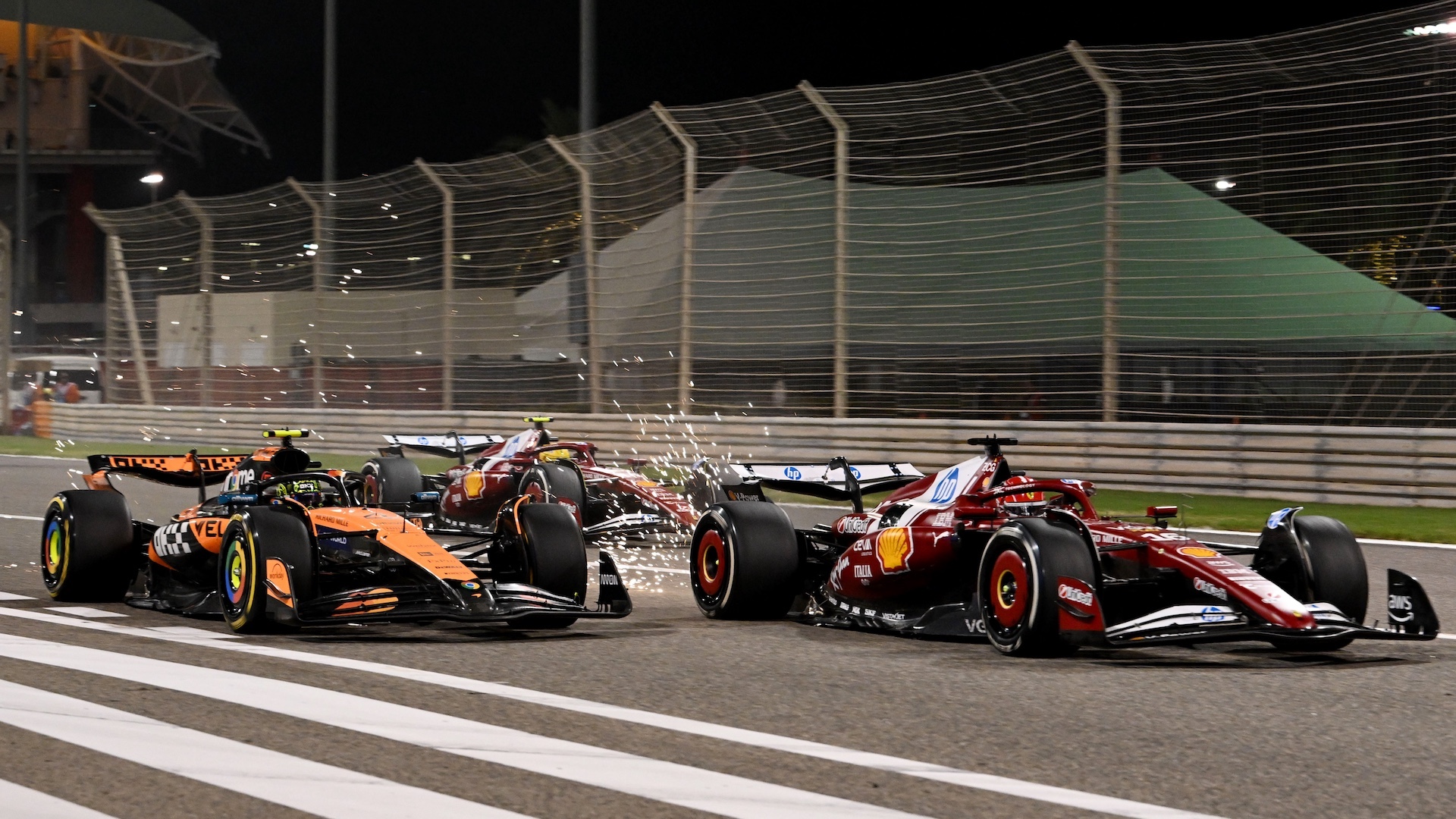

Formula 1 is all about margins: A thousandth of a second can determine an entry into Q3, a hundredth of a second can dictate a podium champagne spray, and a tenth of a second can end a career. Those decimals, however, are difficult to visualize without an on-screen timing sheet accompanying the blur of 20 cars streaking past the TV screen. And if last weekend’s 2025 Bahrain F1 Grand Prix had one problem, it wasn’t the black-and-white flags for drivers exceeding track limits or Nico Hulkenberg’s disqualification. It was a messy TV broadcast.
F1TV, F1’s official race broadcaster, has experimented with a series of new graphics this season. Since the first race of the 2025 season in March, fans have flooded social media platforms to criticize everything from F1’s typography to its lack of a consistent leaderboard. Regardless of how exciting the on-track action may be, it only matters if viewers around the globe can watch it.
On Sunday, a race brimming with bumper car collisions and defensive master classes fell short of expectations as the decimals that keep spectators on the edge of their seats were periodically absent from viewers’ screens. “Not having live timing to constantly stare at really does ruin the fan experience pretty massively during a race,” Matt Gallagher of P1 With Matt & Tommy, a popular F1 podcast, posted on X.



As Oscar Piastri’s papaya orange McLaren sailed across the checkered flag to clinch first place and Max Verstappen battled with Pierre Gasly to take sixth place across the finish line, the camera zeroed in on a different scene: the second McLaren trailing George Russell. While the last-second scraps were replayed, spectators watching from home missed the final-lap showdown.
But the issue is larger than just clashing font selections, missing digits, or ill-advised camera angles. As F1 faces an American broadcast bidding war with limited interest, it risks failing to serve an attractive product.
ESPN and ABC currently own exclusive rights to air F1 stateside. After the network penned an agreement in 2018 to broadcast races for just $5 million, it made the leap to a reported $90 million per year media rights deal in 2023. With the media giant stepping back at the end of this season, 2026 television and streaming rights are on the table. Reports began to circulate in February that Netflix was interested, and Warner Bros. Discovery, Fox, Amazon, and NBC have all been connected with a potential bid, with F1TV included. The only problem is the price tag attached: F1 wants between $150 million to $180 million annually, according to the Wall Street Journal.
Despite Drive to Survive, the sport’s seven-season Netflix docuseries, spreading F1 fever across all 50 states, the racing series isn’t worth upwards of $100 million, research firm Ampere Analysis found. And while ESPN drew a record 3.1 million viewers during the 2024 Miami Grand Prix, several factors—including early start times as the sport traveled across the globe—contributed to overall spectatorship in 2024 decreasing by 3 percent.
F1’s recipe for success—an on-track spectacle amplified by show runs and sprint races popping up in America’s biggest cities—is tied to making the exclusive experience of visiting a track more accessible via a television set.


In fact, when Bernie Ecclestone, the sport’s former commercial rights executive, saw the future of F1, he saw television. Inspired by American football’s screen time, the British business magnate sold off rights to the European Broadcasting Union for all 16 races across the 1982 season. By the turn of the decade, Ecclestone realized the real money was found in selling the TV rights separately in each country. By the early ‘90s, F1 TV ratings had grown to 200 million viewers per race, and the sport’s television rights were worth $120 million over five years. When Colorado-based Liberty Media snagged F1’s commercial rights in 2017, it was all about selling the series’ home theater potential to Americans. And those Americans took a big bite out of the most European of sports: A 2022 poll found that 28 percent of Americans consider themselves F1 fans.
But as F1’s attention increasingly veers toward bringing the on-track appeal of the sport off-track—from rolling out the red carpet to selling VIP suite tickets—the majority of fans will continue to engage with it in front of a screen.
The success of a media rights deal is dependent on several factors: the potential for additional eyes, the opportunity for exclusivity and, most importantly, the future revenue stream. But keeping legacy fans happy is part of the bargain F1 can’t afford to lose. Selling a good racing product is a vital part of that package.
On Sunday, there were plenty of storylines that offered an entertaining show for fans watching from their couches: Russell’s slew of transponder, DRS, and dash issues; Charles Leclerc’s defensive strategy; Max Verstappen’s ailing Red Bull. However, most of those narratives were defined by decimals and other visuals that fans couldn’t see with the naked eye.
The disappearance of those numbers may seem trivial, but they tell a story. Without them and the darting eyes they demand, F1 isn’t a racing product worth $180 million. In fact, it loses most of its value without a timing sheet.
Got a tip? Email us at tips@thedrive.com